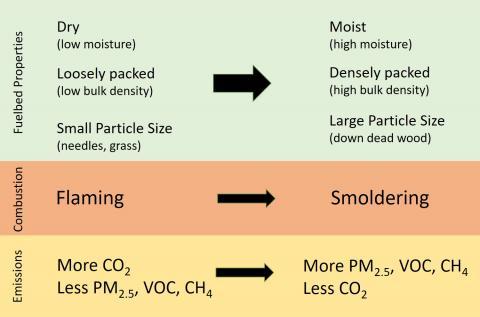Wildland fires are a major source of pollutants resulting in both air quality impacts and climate interactions. Wildland fire smoke can trigger severe pollution episodes with substantial effects on public health and fire emissions can degrade air quality at considerable distances downwind, hampering efforts by air regulators to meet air standards. Fires are also a major global source of aerosols which affect the climate system by absorbing and scattering radiation and by altering optical properties, coverage, and lifetime of clouds. USDA Forest Service Research & Development initiated a national assessment on smoke science to provide the foundation for developing smoke management options nation-wide and across all land management jurisdictions. The assessment focuses on wildland fire smoke management issues, finding potential solutions to minimize the negative impacts of smoke on air quality, and identifying research gaps to support development of these solutions. A thorough understanding of fire emissions—the composition and intensity of smoke—is essential for developing management options that effectively address the societal and climate consequences of wildland fire smoke.
A team of USDA Forest Service, Environmental Protection Agency, and university experts reviewed the scientific literature covering all aspects of wildland fire emissions. This included evaluating a large body of laboratory and field studies which identify pollutants present in smoke and characterize how their abundances vary with vegetation type and fire behavior. The team also assessed methods for quantifying emission flux—the location, time, and amount—of pollutants released into the atmosphere by wildland fires. They inventoried and reviewed existing datasets, tools, and models available to researchers, land managers, air regulators, and public health officials.
The assessment identified deficiencies in current scientific understanding which are impediments to developing and providing the guidance, data, and tools that are vital for addressing the wide spectrum of decision support needs related to wildland fire smoke. The research gaps identified include the composition of smoke from wildfires, emissions from structure fires, forecasting wildfire emissions, validation of emission flux methods, and techniques for measuring aerosol.
- The current state of the science on emissions from wildland fires in the United States and Canada was assessed
- Current knowledge regarding the composition, intensity, and drivers of emissions are summarized
- Emission datasets and tools available for smoke forecasting regulatory activities, smoke management, and research are reviewed
- The crucial gaps in understanding of wildland fire emissions are discussed and pathways for addressing these gaps are identified

